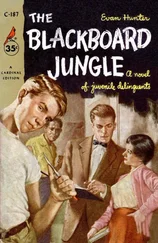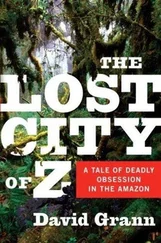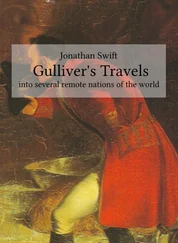Algot Lange - In the Amazon Jungle - Adventures in Remote Parts of the Upper Amazon River, Including a Sojourn Among Cannibal Indians
Здесь есть возможность читать онлайн «Algot Lange - In the Amazon Jungle - Adventures in Remote Parts of the Upper Amazon River, Including a Sojourn Among Cannibal Indians» весь текст электронной книги совершенно бесплатно (целиком полную версию без сокращений). В некоторых случаях можно слушать аудио, скачать через торрент в формате fb2 и присутствует краткое содержание. Жанр: Путешествия и география, Приключения про индейцев, на английском языке. Описание произведения, (предисловие) а так же отзывы посетителей доступны на портале библиотеки ЛибКат.
- Название:In the Amazon Jungle : Adventures in Remote Parts of the Upper Amazon River, Including a Sojourn Among Cannibal Indians
- Автор:
- Жанр:
- Год:неизвестен
- ISBN:нет данных
- Рейтинг книги:3 / 5. Голосов: 1
-
Избранное:Добавить в избранное
- Отзывы:
-
Ваша оценка:
- 60
- 1
- 2
- 3
- 4
- 5
In the Amazon Jungle : Adventures in Remote Parts of the Upper Amazon River, Including a Sojourn Among Cannibal Indians: краткое содержание, описание и аннотация
Предлагаем к чтению аннотацию, описание, краткое содержание или предисловие (зависит от того, что написал сам автор книги «In the Amazon Jungle : Adventures in Remote Parts of the Upper Amazon River, Including a Sojourn Among Cannibal Indians»). Если вы не нашли необходимую информацию о книге — напишите в комментариях, мы постараемся отыскать её.
In the Amazon Jungle : Adventures in Remote Parts of the Upper Amazon River, Including a Sojourn Among Cannibal Indians — читать онлайн бесплатно полную книгу (весь текст) целиком
Ниже представлен текст книги, разбитый по страницам. Система сохранения места последней прочитанной страницы, позволяет с удобством читать онлайн бесплатно книгу «In the Amazon Jungle : Adventures in Remote Parts of the Upper Amazon River, Including a Sojourn Among Cannibal Indians», без необходимости каждый раз заново искать на чём Вы остановились. Поставьте закладку, и сможете в любой момент перейти на страницу, на которой закончили чтение.
Интервал:
Закладка:
Opposite Remate de Males, across the Itecoahy, is a collection of some ten huts that form the village of São Francisco, while across the Javary is the somewhat larger village of Nazareth. Like every real metropolis, you see, Remate de Males has its suburbs. Nazareth is in Peruvian territory, the Javary forming the boundary between Brazil and Peru throughout its length of some 700 miles. This same boundary line is a source of amusing punctiliousness between the officials of each country. To cross it is an affair requiring the exercise of the limits of statesmanship. I well remember an incident that occurred during my stay in the village. A sojourner in our town, an Indian rubber-worker from the Ituhy River, had murdered a woman by strangling her. He escaped in a canoe to Nazareth before the Brazilian officials could capture him, and calmly took refuge on the porch of a house there, where he sat down in a hammock and commenced to smoke cigarettes, feeling confident that his pursuers would not invade Peruvian soil. But local diplomacy was equal to the emergency. Our officials went to the shore opposite Nazareth, and, hiding behind the trees, endeavoured to pick off their man with their .44 Winchesters, reasoning that though their crossing would be an international incident, no one could object to a bullet's crossing. Their poor aim was the weak spot in the plan. After a few vain shots had rattled against the sheet-iron walls of the house where the fugitive was sitting, he got up from among his friends and lost himself in the jungle, never to be heard of again.
About sixty-five houses, lining the bank of the Itecoahy River over a distance of what would be perhaps six blocks in New York City, make up Remate de Males. They are close together and each has a ladder reaching from the street to the main and only floor. At the bottom of every ladder appears a rudimentary pavement, probably five square feet in area and consisting of fifty or sixty whiskey and gin bottles placed with their necks downwards. Thus in the rainy season when the water covers the street to a height of seven feet, the ladders always have a solid foundation. The floors consist of split palm logs laid with the round side up. Palm leaves form the roofs, and rusty corrugated sheet-iron, for the most part, the walls. Each house has a sort of backyard and kitchen, also on stilts and reached by a bridge.
Through the roofs and rafters gambol all sorts of wretched pests. Underneath the houses roam pigs, goats, and other domestic animals, which sometimes appear in closer proximity than might be wished, owing to the spaces between the logs of the floor. That is in the dry season. In the winter, or the wet season, these animals are moved into the houses with you, and their places underneath are occupied by river creatures, alligators, water-snakes, and malignant, repulsive fish, of which persons outside South America know nothing.
Near the centre of the village is the "sky-scraper," the Hotel de Augusto , which boasts a story and a quarter in height. Farther along are the Intendencia , or Government building, painted blue, the post-office yellow, the Recreio Popular pink; beyond, the residence of Mons. Danon, the plutocrat of the village, and farther "downtown" the church, unpainted. Do not try to picture any of these places from familiar structures. They are all most unpretentious; their main point of difference architecturally from the rest of the village consists in more utterly neglected façades.
The post-office and the meteorological observatory, in one dilapidated house, presided over by a single self-important official, deserve description here. The postmaster himself is a pajama-clad gentleman, whose appearance is calculated to strike terror to the souls of humble seringueiros , or rubber-workers, who apply for letters only at long intervals. On each of these occasions I would see this important gentleman, who had the word coronel prefixed to his name, João Silva de Costa Cabral, throw up his hands, in utter despair at being disturbed, and slowly proceed to his desk from which he would produce the letters. With great pride this "Pooh-Bah" had a large sign painted over the door. The post-office over which he presides is by no means overworked, as only one steamer arrives every five weeks, or so, but still he has the appearance of being "driven." But when he fusses around his " Observatorio meteorologico ," which consists of a maximum and minimum thermometer and a pluviometer, in a tightly closed box, raised above the ground on a tall pole, then indeed, his air would impress even the most blasé town-sport. I was in the village when this observatory was installed, and after it had been running about a week, the mighty official called on me and asked me confidentially if I would not look the observatory over and see if it was all right.
My examination showed that the thermometers were screwed on tight, which accounted for the amazingly uniform readings shown on his chart. The pluviometer was inside the box, and therefore it would have been difficult to convince scientists that the clouds had not entirely skipped Remate de Males during the rainy season, unless the postmaster were to put the whole observatory under water by main force. He also had a chart showing the distribution of clouds on each day of the year. I noticed that the letter "N" occupied a suspiciously large percentage of the space on the chart, and when I asked him for the meaning of this he said that "N"—which in meteorological abbreviation means Nimbus—stood for " None " (in Portuguese Não ). And he thought that he must be right because it was the rainy season.
The hotel, in which I passed several months as a guest, until I finally decided to rent a hut for myself, had points about it which outdid anything that I have ever seen or heard of in comic papers about "summer boarding." The most noticeable feature was the quarter-of-a-story higher than any other house in the village. While this meant a lead as to quantity I could never see that it represented anything in actual quality. I would not have ventured up the ladder which gave access to the extra story without my Winchester in hand, and during the time I was there I never saw anyone else do so. The place was nominally a store-house, but having gone undisturbed for long periods it was an ideal sanctuary for hordes of vermin—and these the vermin of the Amazon, dangerous, poisonous, not merely the annoying species we know. Rats were there in abundance, also deadly scolopendra and centipedes; and large bird-eating spiders were daily seen promenading up and down the sheet-iron walls.
On the main floor the building had two large rooms across the centre, one on the front and one on the rear. At each side were four small rooms. The large front-room was used as a dining-room and had two broad tables of planed palm trunks. The side-rooms were bedrooms, generally speaking, though most of the time I was there some were used for stabling the pigs and goats, which had to be taken in owing to the rainy season.
It is a simple matter to keep a hotel on the upper Amazon. Each room in the Hotel de Augusto was neatly and chastely furnished with a pair of iron hooks from which to hang the hammock, an article one had to provide himself. There was nothing in the room besides the hooks. No complete privacy was possible because the corrugated sheet-iron partitions forming the walls did not extend to the roof. The floors were sections of palm trees, with the flat side down, making a succession of ridges with open spaces of about an inch between, through which the ground or the water, according to the season, was visible. The meals were of the usual monotonous fare typical of the region. Food is imported at an enormous cost to this remote place, since there is absolutely no local agriculture. Even sugar and rice, for instance, which are among the important products of Brazil, can be had in New York for about one-tenth of what the natives pay for them in Remate de Males. A can of condensed milk, made to sell in America for eight or nine cents, brings sixty cents on the upper Amazon, and preserved butter costs $1.20 a pound.
Читать дальшеИнтервал:
Закладка:
Похожие книги на «In the Amazon Jungle : Adventures in Remote Parts of the Upper Amazon River, Including a Sojourn Among Cannibal Indians»
Представляем Вашему вниманию похожие книги на «In the Amazon Jungle : Adventures in Remote Parts of the Upper Amazon River, Including a Sojourn Among Cannibal Indians» списком для выбора. Мы отобрали схожую по названию и смыслу литературу в надежде предоставить читателям больше вариантов отыскать новые, интересные, ещё непрочитанные произведения.
Обсуждение, отзывы о книге «In the Amazon Jungle : Adventures in Remote Parts of the Upper Amazon River, Including a Sojourn Among Cannibal Indians» и просто собственные мнения читателей. Оставьте ваши комментарии, напишите, что Вы думаете о произведении, его смысле или главных героях. Укажите что конкретно понравилось, а что нет, и почему Вы так считаете.












